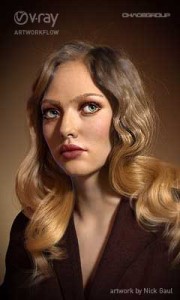
After years of using V-Ray in production on projects like Oblivion and Iron Man 3, Digital Domain used an early integration of deep image support to put some of 3.0’s features to the test. “On Ender’s Game, we hooked massive Houdini swarm simulations up to V-Ray Proxies and rendered the most geometry we’ve ever attempted at Digital Domain,” said Linghao Li, technical director at Digital Domain. “In one shot alone there were 333,443 ships on screen. 27 billion polygons rendered out for Deep Compositing and V-Ray handled it no problem.”
V-Ray 3.0 introduces a new path-tracing engine (Progressive Image Sampler) that provides artists with instant feedback during the look development process. In addition, V-Ray 3.0’s new optimized core raises speed levels dramatically in physically-based lighting, shading and rendering.

“We rely on V-Ray every day to help us craft big projects like Game of Thrones, Warm Bodies and Noah,” said Dmitry Vinnik, CG/technical supervisor at LOOK Effects. “Faster ray tracing and hair rendering is exactly what we need to turn around big shots before a deadline.”
V-Ray 3.0 has also added support for common open source formats like OpenSubdiv, Alembic 1.5, Deep Images and OpenEXR 2.0, OpenColorIO, and in the near future, programmable shaders with Open Shading Language [OSL].
“Of the many renderers I’ve used, I personally feel that none are as artist-friendly as V-Ray,” said Blake Sweeney, DFX supervisor at Method Studios. “The built-in shaders and render elements give us solutions for almost every situation imaginable. For the rare corner case that requires something extra, Chaos Group collaborates and brainstorms with us to find a solution, and it’s generally included in updates almost immediately. I’ve never seen anything like it.”
For more information, visit http://www.chaosgroup.com/en/2/vrayformayabeta_join.html?utm_source=press&utm_medium=link&utm_content=intext&utm_campaign=joinbeta_maya_pr





